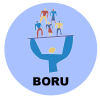When we talk about customer relationship management (CRM), the term ‘customization’ often springs to mind. It’s a crucial element that differentiates a good CRM from a great CRM, allowing businesses to tailor the system to fit their unique processes and requirements. This is where Vtiger CRM shines, with its robust permissions capabilities, one of which includes the concept of roles. But what if standard roles just don’t cut it for your business’s specific needs? That’s where my expertise in creating custom roles comes into play.
Understanding Vtiger’s Standard Roles
Before diving into the nitty-gritty of custom roles, let’s set the stage by discussing Vtiger’s standard roles feature. Imagine well-defined roles like Salesperson, CEO, or Support User, each with a preset list of permissions to access different parts of the CRM. These standard roles are incredibly handy—they enable quick and easy set-up for new users entering the system, aligning with the typical hierarchy and functionality of a company.
The Power of Customization: My Work with Custom Roles
Sometimes, the predefined roles provided by Vtiger’s open source capabilities simply aren’t sufficient. That’s when clients approach me with requests that push beyond the boundaries of standard features. In such cases, custom roles come into the picture, built through programming to meet highly specific needs. Here’s an insightful example of a custom role I crafted for a client, which highlights the extent of customization possible.
A Custom Role Case Study: Platinum 2
The client needed a custom role for third-party users who weren’t part of their core company structure—users who needed access to performance reports without navigating the rest of the CRM. Enter the ‘Platinum 2’ role. With this role, users are routed directly to the reports module upon login and are restricted from accessing any other area.
- Focused Accessibility: The users with this role can only view reports containing the phrase ‘Platinum 2’ in the title, with all others being hidden or inaccessible. This fine-tuning puts relevant data forefront, eliminating any unnecessary navigation or information overload.
- UI Streamlining: I’ve also eliminated certain UI elements for these users, such as the ability to add reports or use pagination within the reports section.
- Record Detail Restrictions: While these users need access to leads for reports to function correctly, they’re barred from delving into the leads’ intricate details—a safeguard to prevent unwarranted access.
Beyond the Example: Unlimited Potential
Creating the ‘Platinum 2’ role is just the tip of the iceberg. Such a specialized, narrowed-down approach to CRM roles showcases the vast potential of what programming can achieve in the realm of customization. Whether it’s directing users to select opportunities at a specific stage or tailoring the CRM to show only the necessary pages, custom roles can be a transformative tool for streamlining operations.
Embracing Custom Roles: When to Consider
I always recommend first exploring Vtiger’s standard roles to see if they meet your needs. However, if your requirements extend beyond the existing functionalities, or you encounter challenges that demand a custom touch, don’t hesitate to reach out. By engaging in a discovery session, we can flesh out your vision for a custom role, ensuring your CRM aligns perfectly with your business objectives.
In conclusion, my commitment to delivering precise and effective CRM system strategies through customized roles aims to propel your business toward peak operational efficiency. If you’re intrigued by the thought of refining your CRM experience, let’s connect and engineer the perfect custom role solution for you. Thank you for considering the power of bespoke CRM roles—your pathway to a personalized, efficient CRM strategy.


